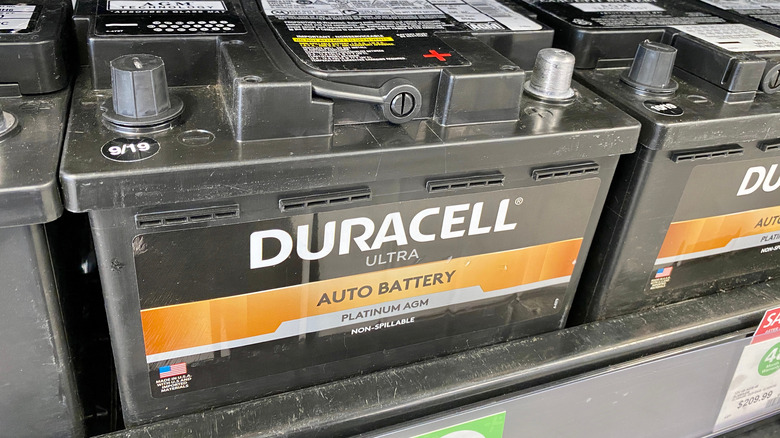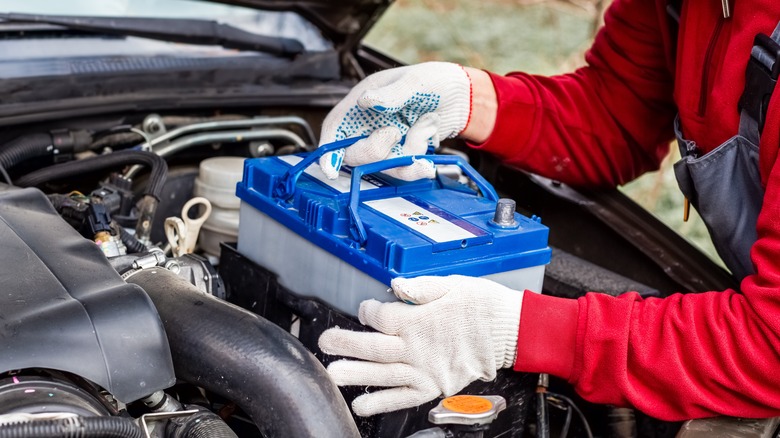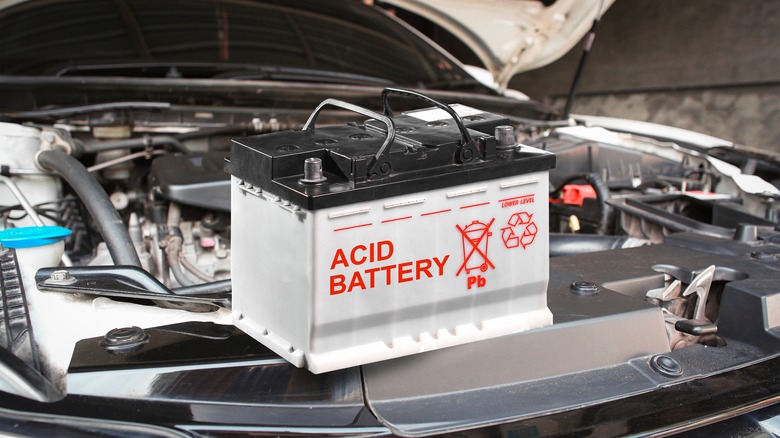AGM Vs Standard Car Batteries: What's The Difference & Is One Better For Your Vehicle?
While they all share a basic common purpose, car batteries are not universal. There are many kinds of car batteries, and you'll want to make sure you have the right one for your vehicle. The most economical option are standard lead-acid batteries that — although they require monitoring of water levels — won't cost an arm and a leg to replace. A valve-regulated lead-acid battery (VRLA) will cost a bit more but offers the convenience of maintenance-free operation, meaning there's no need to add water to the case over the battery's lifespan.
Many newer cars with more sophisticated electronics and start-stop ignition systems come with Absorbed Glass Mat (AGM) batteries from the factory. AGM batteries are 40% to 100% costlier than lead-acid batteries but have a corresponding list of advantages: longer lifespan, slower discharge and faster recharge times, better resistance to vibration and extreme temperatures, spill-proof construction, and more available power when the engine isn't running.
AGM batteries use absorbent mats between the plates
An AGM battery costs more than a VRLA battery because of its more complex internal construction. Instead of lead plates submerged in water and sulfuric acid, an AGM battery has fiberglass mats sandwiched tightly between the plates. Those mats absorb the electrolytes like a sponge, spreading them evenly around and among the plates while cushioning against bumps, knocks, and vibrations. The design has a lower internal resistance than lead-acid batteries that contributes significantly to its durability and output.
Moreover, the glass mat design has enabled manufacturers to pack more lead plates inside, enabling the battery to produce more power. AGM batteries still fall under the VRLA category despite their superior internal construction. They share the same maintenance-free and spill-proof operation.
Since AGM batteries pack a more effective punch, they can start your car's engine 60,000 times or more, about three times more than a lead-acid battery. AGM car batteries also typically have a higher CCA (Cold Cranking Amps) rating and are more capable of withstanding freezing weather due to the lack of water inside. These attributes make them ideal for modern vehicles with immersive infotainment screens, stop-start engines, advanced driving assistance systems, heated/ventilated seats, and head-up displays. AGM batteries are also useful on trucks or SUVs with high-draw equipment like winches and off-road lighting.
AGM or VRLA car battery: Which is better for my car?
The choice between an AGM or standard battery will depend on the vehicle type. A flooded lead-acid or VRLA battery might be a good option if you have an older car. On the other hand, some newer vehicles require AGM batteries and might not be suited for regular VRLA or lead-acid batteries. To be sure, you can refer to the owner's manual, call your dealership's service department, or perform a physical check under the hood. If your car's old battery has an AGM label, you must replace it with a comparable AGM battery.
Vehicles with engine stop-start systems will have AGM batteries under the hood, but double-checking before purchasing a new battery is always a good idea. AGM car batteries can last four to seven years with proper care, while flooded lead-acid or VRLA batteries usually last a little bit less than that. Inspecting the battery and cleaning the terminals whenever you're under the hood to check the oil is a good habit to get into. Bulges in the casing and hard starting when cold are just a few symptoms of a dying car battery, and staying on top of the condition of your battery can help prevent you from getting stranded.


